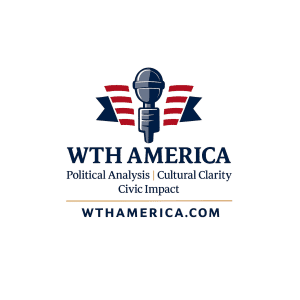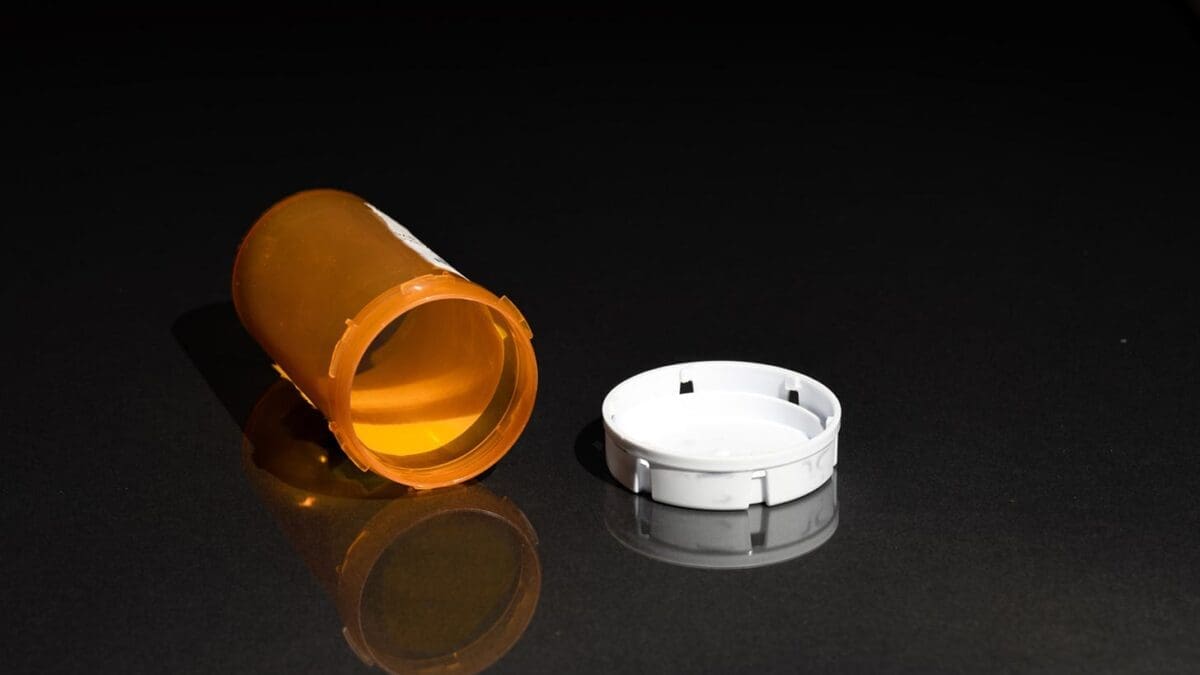
Unpopular at Home, Emmanuel Macron Plays at World Leader
March 30, 2025
Social Movements Constrained Trump in His First Term—More Than People Realize
March 30, 2025ONE OF THE BIGGEST ADVANCES in public health from the last few years is one that you’ve probably never heard about—and one that now may be in jeopardy thanks to the Trump administration.
I’m talking about a dramatic turnaround in America’s opioid crisis, the epidemic that began in the late 1990s with an explosion in the use of addictive prescription painkillers, and then got even worse with a surge in the use of heroin and its synthetic alternative, fentanyl. The effects have left families, communities, and in some cases whole regions of the country reeling, and more than 700,000 Americans dead from overdoses.
But recently the death rate from overdoses has started to fall. In the latest twelve-month period that the official data captures, the decline has been particularly steep: 24 percent.
In raw numbers, that’s 27,000 fewer deaths over the course of a year—a figure that, as Johns Hopkins University professor Brendan Saloner told me in an interview, is “astonishing.”
Pinpointing the cause of the drop is, as always, difficult. Researchers like Saloner think it’s most likely a combination of factors—like changes in the purity of fentanyl available from dealers and more effective interdictions of foreign smuggling chains. There’s also the grim possibility of a “burning out” effect, as the people most likely to overdose die off.
But another likely factor, in the view of most experts, has been a surge in federal support for substance abuse programs.
That includes the programs offering prevention, treatment, and recovery services, as well as those focusing on “harm reduction” strategies like the distribution of Naloxone, the fast-acting drug that can keep overdose victims alive long enough to get them emergency medical care.
The surge started with legislation that Barack Obama signed in the final year of his presidency, but in the years that followed the effort was relatively bipartisan. That included support from Donald Trump, who talked frequently about the opioid crisis during the 2016 campaign and then, as president, returned to the subject in a memorable October 2017 speech.
“As Americans, we cannot allow this to continue,” Trump said, citing his late brother’s difficulties with alcoholism as a personal connection to the issue. “It is time to liberate our communities from this scourge of drug addiction.” And although his record didn’t really live up to his rhetoric, his administration did launch several anti-opioid initiatives.
Now Trump is back in the White House and, in theory, he remains committed to the opioid effort. In fact, a little less than two weeks ago, Secretary of Health and Human Services Robert F. Kennedy Jr. renewed the epidemic’s status as a “public health emergency,” stating in an official release that “addressing the opioid overdose crisis . . . is one of many critical steps we will take to Make America Healthy Again.”
But just nine days later, Kennedy announced sweeping layoffs designed to slash HHS staff by 25 percent, as part of a broader reorganization that will partly dismantle several of the department’s smaller agencies. One of them is an agency that’s been at the center of the federal opioid effort.
IT’S CALLED the Substance Abuse and Mental Health Services Agency, or SAMHSA. And if you’ve never heard of it, don’t feel bad. Most people haven’t.
But SAMHSA is the agency that awards and manages the big grant program that states use to finance their substance abuse efforts. It’s also the agency that runs the National Survey on Drug Use and Health, the gold-standard assessment that policymakers and researchers rely on to understand trends and shifts in how people are using drugs.
Other SAMHSA duties include establishing best practices for different types of substance abuse initiatives, offering training programs for substance abuse workers, and operating the new 998 hotline for suicide and mental health crises. In order to keep close tabs on what’s actually happening in the country—and maintain an ongoing dialogue with local officials—SAMHSA had staff in the ten HHS regional offices.
Now all of that is going to change. The plan Kennedy announced will eliminate SAMHSA as a separate entity, folding it and several other smaller agencies into a new division called the “Administration for a Healthy America.” It will also cut the number of HHS regional offices in half, leaving just five.
And while HHS officials have not specified publicly how many SAMHSA staff will lose their jobs, the New York Times has reported (and a source familiar with discussions has since confirmed to me) that Kennedy and his lieutenants have talked about reducing the agency’s headcount by half, with occasional mention of even bigger cuts.
The official rationale for the cuts and consolidation is that they will make SAMHSA work better: “Transferring SAMHSA to AHA will increase operational efficiency and assure programs are carried out because it will break down artificial divisions between similar programs,” an HHS press release said.
It’s the same way Kennedy justified the broader HHS overhaul, which he explained in a six-minute video posted to social media. “HHS is a sprawling bureaucracy that encompasses literally hundreds of departments, committees, and other offices,” Kennedy said. “You know how bureaucracies work. Every time a new issue arises, they tack on another committee.”
“This will be a painful period for HHS,” Kennedy acknowledged, although he vowed that the public won’t feel much of a pinch: “We’re going to do more with less. No American is going to be left behind.”
There’s absolutely nothing controversial about trying to reorganize the sprawling, frequently byzantine structure of HHS, or hacking away at the internal processes and rules that can impede rather than enable progress. Just three years ago, a blue-ribbon commission convened by the Commonwealth Fund—a well-respected, left-leaning think-tank—issued its own call for substantial changes at the department.
But that document was the result of lengthy, careful discussion of priorities and tradeoffs. There are few visible signs that the Trump administration engaged in such deliberations, and plenty of signs that it didn’t—especially at SAMHSA.
SAMHSA GOT ITS FIRST TASTE of cuts back in February, when the Trump administration ordered government-wide firings of “probationary” workers (which meant anybody, whether newly hired or newly promoted, who’d been in their position for less than a year).
Among those hit hardest were the ten regional offices, according to Scott Gagnon, who ran the New England division. SAMHSA’s staffing at several of them fell from four or three workers to one or none, he told me, undermining capabilities and responsiveness in a way that will only get worse with the new cuts HHS just announced.
“Imagine what that means—they’re still going to cover the whole country, but now every office is going to cover up to twelve states, instead of just five or six,” said Gagnon, who is now on administrative leave because the courts ordered the Trump administration to reinstate the probationary workers but HHS hasn’t put them on the job. “In my state of Maine, they would see me several times a year. Now they might be lucky to get one or two visits. It’s just really going to dilute that responsiveness and that connection,”
The damage to SAMHSA’s data collection work could be even more pernicious, several experts told me, because the data is so essential to public and private-sector leaders trying to craft substance abuse policy—and because projects like the big national survey require so much expertise and institutional knowledge to operate.
“That is the only national survey we have on drug use, and if the staff who does that work is cut, then we’re flying blind,” Regina LaBelle, a Georgetown University professor who served in the Obama and Biden administrations, told me.
“Good data actually takes a lot of manpower,” added Kathryn Poe, a health care researcher at the think tank Policy Matters Ohio. “You have to clean it, you have to evaluate it, you have to organize it. You have to make sure that you’re getting accurate reporting. You have to actually analyze it. And all of that is stuff that’s done by humans.”
THE BEST HOPE for the government’s opioid efforts is that all of the talk about making HHS more effective is genuine, that they will cut smartly and not arbitrarily, and that somewhere in the Trump administration there are officials mindful of recent progress and eager to—as Saloner put it to me—“be heroic and do something big and important to sustain what was already underway.”
But it’s awfully hard to imagine such thoughtful, deliberate reforms coming from leaders who wave around chainsaws while discussing their designs on government, or who say their ultimate goal is turning career civil servants into “villains.” And it’s hard to understand how HHS is going to get more efficient when it is shuttering so many offices—and firing so many people—whose very jobs are to watch over agency programs and make sure they are working properly.
“They have the know-how, in-house, to make decisions about how to steer resources, that institutional judgment . . . that’s intangible but super important,” Saloner said, adding that they are also the ones who handle the tedious, unglamorous and essential work “of making sure that there’s compliance with federal standards, that things are being correctly reported, that there’s no misuse or waste of funds.”
As for Trump, his interest in the opioid project also seems suspect at best. The rhetoric from his first campaign and term, whatever its authenticity, featured a discernible empathy for people with substance abuse problems—and a clear commitment to the proposition that an effective strategy included the kinds of investments SAMHSA has managed.
Now, whenever Trump talks about opioids, it’s to raise the specter of fentanyl as a foreign menace, justifying his border policies and posture towards other countries.
Trump is also behind congressional efforts to enact sweeping spending cuts, in order to offset the cost of his multitrillion-dollar tax cut. And although the Republicans in Congress are still arguing over how to do that, it’s easy to imagine them agreeing to cuts in substance abuse funds given that one element of the current strategy—harm reduction—already has loud critics among conservatives, who think it implicitly condones drug use.
And that’s to say nothing of the possibility, which Republicans in Congress have discussed explicitly, of cuts to Medicaid, the federal-state program that pays medical bills for more than 70 million mostly low-income Americans. It is the nation’s single biggest financier of mental health and substance abuse treatment.
If Medicaid shrinks and fewer people have coverage, either states will have to make up for the lost substance abuse funding by pulling funds from elsewhere, or they’ll just let the shortfalls stand. Either way, the result will likely be fewer people getting the help they need and, ultimately, more people dying from overdoses.
It doesn’t have to be that way, as the last two years have shown. But it’s not at all clear the Trump administration knows this—or that it cares.
Great Job Jonathan Cohn & the Team @ The Bulwark Source link for sharing this story.






